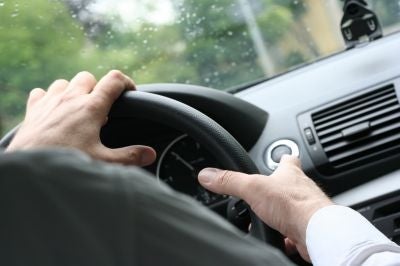Your support helps us to tell the story
From reproductive rights to climate change to Big Tech, The Independent is on the ground when the story is developing. Whether it's investigating the financials of Elon Musk's pro-Trump PAC or producing our latest documentary, 'The A Word', which shines a light on the American women fighting for reproductive rights, we know how important it is to parse out the facts from the messaging.
At such a critical moment in US history, we need reporters on the ground. Your donation allows us to keep sending journalists to speak to both sides of the story.
The Independent is trusted by Americans across the entire political spectrum. And unlike many other quality news outlets, we choose not to lock Americans out of our reporting and analysis with paywalls. We believe quality journalism should be available to everyone, paid for by those who can afford it.
Your support makes all the difference.Ford has unveiled the crash avoidance technology it has been working on, following the lead from Nissan as automakers vie to demonstrate the technological advantages that make their cars safer.
Ford researchers have been experimenting with wireless and GPS technology that would allow vehicles to detect each others' positions and communicate with each other to avoid a collision.
The Detroit automaker says that its ABICAS (Automatic Braking Intersection Collision Avoidance System) system will warn a driver of imminent side impact collisions and automatically apply the brakes if necessary, avoiding or minimizing the damage of such a crash.
The system adds wireless communications to the front and rear radar and camera based safety systems already present on some vehicles, thus protecting the car from every angle.
Ford says that this technology could greatly reduce accidents at intersections, quoting National Highway Traffic Safety Administration figures that state 40 percent of all traffic accidents occur in intersections where side-impact collisions are most common.
Last week, Nissan unveiled its own "Forward Collision Avoidance Assist Concept", designed to avoid rear-end collisions.
The radar-based system is capable of detecting a collision threat at up to 60 km/h (higher than any other systems, says Nissan), before warning the driver and automatically decelerating the vehicle.
If the system then judges that a collision is possible, it will brake harder and tighten the driver's seatbelt in anticipation of a collision.
With the advance of technology, safety systems inconceivable only five years ago are now becoming a reality and although common standards for such hi-tech innovations are still a way off, automakers say that they're prepared to work together.
Ford said that it was "working closely with governments, standards organizations and other global automakers to develop harmonized global standards to support and accelerate the deployment of this technology."
"Ford and other global vehicle manufacturers need harmonized standards in order to support their global vehicle platforms and to develop reliable, cost-effective wireless systems," the firm concluded.

Join our commenting forum
Join thought-provoking conversations, follow other Independent readers and see their replies
Comments